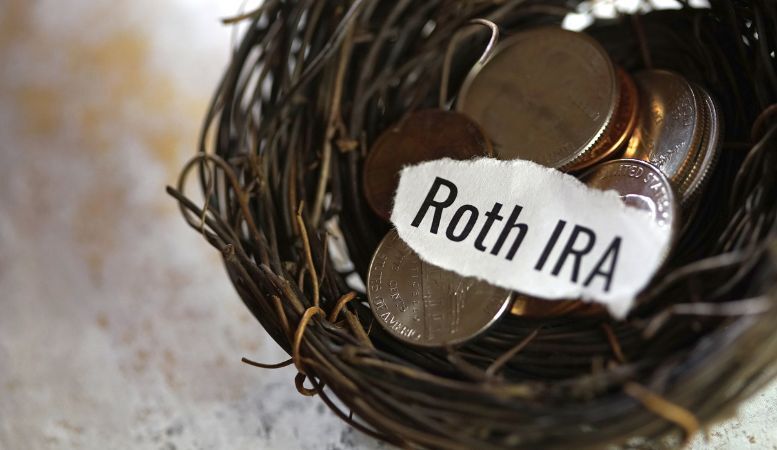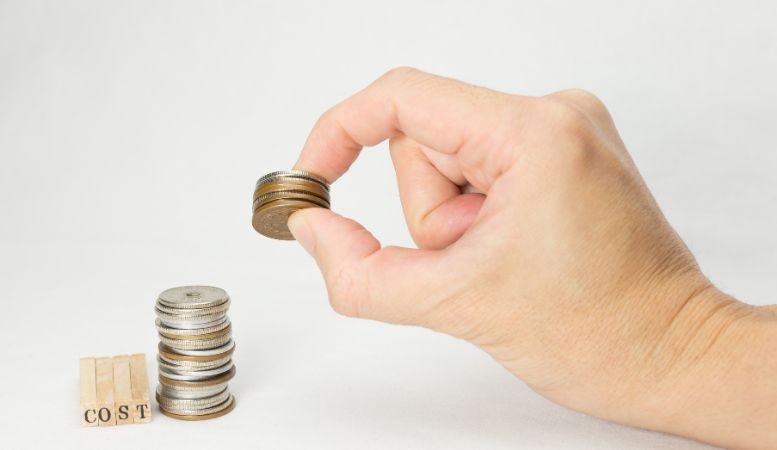Table of Contents
A gold individual retirement account (IRA) may help you diversify your retirement plan and minimize investment risks, but investing in gold in Roth IRA accounts comes with tax implications and other restrictions you need to know.
Our gold IRA experts at Oxford Gold Group explain how to invest in gold in a Roth IRA, including the pros and cons, regulations, tax implications, and more. We hope it helps you make an informed decision on whether a gold Roth IRA is right for you.
What Is a Roth IRA?
Many types of IRAs have Roth options, including precious metals IRAs, traditional IRAs, and others. The term “Roth” refers to how the account is taxed and is named after Senator William Roth, a primary sponsor of this IRA tax structure.
When you invest in a Roth IRA, you pay taxes on contributions but not on earnings or distributions. This differs from a traditional IRA, which doesn’t require taxes on contributions but does on withdrawals during retirement. Roth IRAs cost more in the short term but provide tax-free distributions in retirement.
How Does Gold in a Roth IRA Work?

Whether or not you can invest in gold in your Roth IRA will depend on your account custodian, some of which don’t allow physical assets like real estate or gold bullion. To fund a Roth IRA with physical gold assets, the gold must meet eligibility requirements established by the United States Internal Revenue Service (IRS).
A Roth gold IRA may include approved gold products like physical gold bars and coins or paper gold investments like exchange-traded funds (ETFs) and stocks in gold mining or retail companies. To transfer your existing Roth IRA to gold investments, you must work with a gold IRA rollover company specializing in retirement accounts with gold assets.
What Are the Advantages of Investing in Gold in a Roth IRA?
The primary potential advantage of investing in gold in Roth IRAs is hedging against inflation and drops in the value of the dollar. Gold IRAs have become increasingly popular because gold prices tend to rise when paper asset values fall. Investors may use gold IRAs to reduce investment risks and create a more well-rounded retirement investment portfolio.
Because you pay taxes on contributions, gold Roth IRAs don’t offer the same upfront tax benefits as traditional IRAs backed by precious metals. Still, they do provide long-term benefits with tax-free distributions and no minimum withdrawals.
What Are the Potential Risks for Gold Investment in a Roth IRA?

Investing in gold in a Roth IRA presents certain risks due to additional expenses, such as the costs of insuring and storing the physical gold, brokerage fees, and account fees. Before investing in a gold Roth IRA, speak with your financial advisor to ensure that you can afford the additional costs.
Investing in gold in a retirement account also presents risks because gold prices fluctuate often. Long-term prices trend upward, but short-term fluctuations may reduce required distributions. Fortunately, minimum distributions don’t begin with Roth IRAs until the account holder’s death.
Rules and Regulations for Gold in Roth IRAs
The IRS enforces certain regulations for investing in gold IRAs that affect the kind of gold you can invest in, how much you can contribute, and how much you must withdraw from the account.
Eligible Gold Investments
If you have a collection of gold jewelry or gold bullion, it may not be eligible to fund your gold Roth IRA. These accounts can include gold coins accepted as legal tender and gold bullion with a minimum fineness of 99.5%. For example, you may invest in the gold Canadian Maple Leaf, which boasts a purity of 99.99%, or a gold bar with the appropriate minimum fineness.
Before you decide to transfer your Roth IRA to gold, consider the fineness of your gold assets and whether or not they meet the purity criteria. Other examples of IRA-approved gold products include but aren’t limited to the following:
- Gold Canadian Polar Bear coins
- Gold Canadian Arctic Fox coins
- Gold North American Bald Eagle coins
- British Royal Mint Gold Standard coins
- Gold Austrian Philharmonic coins
- Gold bars and bullion of at least 99.5% pure gold
Contribution Limits
Both traditional and Roth IRAs have annual contribution limits that restrict the amount you can deposit into the account each year. According to the IRS, total contributions in 2023 include the following limitations:
- No more than $6,500 or $7,500 for account holders 50 years old or older
- No more than the account holder’s taxable income that year (if less than the above number)
Distribution Qualifications
Investors enjoy tax-free withdrawals from their Roth IRAs if they meet the IRS’s requirements for qualified distributions. These include the following:
- The Roth IRA is at least five years old.
- The account holder is at least 59.5 years old.
Gold Roth IRA account holders may be able to make distributions before they reach the minimum age if:
- They become physically or mentally disabled.
- The distribution goes to a beneficiary after the account holder’s death.
- The distribution goes to purchasing, building, or rebuilding the account holder’s first home.
Distributions that don’t satisfy the above requirements may incur a 10% tax penalty.
Tax Implications of Gold in a Roth IRA

A gold Roth IRA has particular tax advantages and disadvantages compared to a traditional IRA. Many investors choose IRAs because they don’t have to pay taxes on contributions, delaying tax payments until retirement, but Roth IRAs don’t work this way.
Rather than delay tax payments, with a Roth IRA, you pay taxes on contributions but benefit long-term from tax-free distributions. A Roth IRA is usually a good choice if you expect to be in a higher tax bracket when you reach age 59.5. Because contributions come from after-tax dollars, you cannot deduct them from your tax return.
How To Invest in Gold for Your Roth IRA
To invest in physical gold in a Roth IRA, you must use a custodian company. Once you create the account, you fund it using a cash deposit or an account rollover from another IRA or eligible retirement account. The custodian then uses these funds to purchase the gold assets and store them in a third-party depository.
The IRS doesn’t allow gold IRA account holders to store their physical gold personally. You must keep your gold assets in IRS-approved facilities.
Investing in Gold Through a Roth IRA vs. Other Types of IRAs
Contribution limits, Roth tax treatment availability, and the type of gold assets allowed in the account all vary depending on the type of IRA you invest in. Here’s a quick overview of the different types of IRAs that may accept physical or paper gold assets:
- Traditional IRAs enforce the same contribution limits as above and allow account holders to invest in gold ETFs but not physical gold.
- Precious Metals IRAs also have the same contribution limits and allow investments in physical and paper gold assets.
- Simplified Employee Pension (SEP) IRAs enforce high contribution limits of $66,000 (or 25% of the account holder’s compensation). They accept gold ETF investments and may accept physical gold assets depending on the plan provider.
- Savings Incentive Match Plan for Employees (SIMPLE) IRAs have a $15,500 contribution limit, accept gold ETF investments, and may accept physical gold assets.
All of these types of IRAs have Roth options.
Can You Sell Your Gold Investment in a Roth IRA?

You have a couple of options to sell your gold investment in a Roth IRA. If you want to leave the funds in the IRA, you can liquidate your gold assets at any time through a qualified broker. However, if you wish to remove funds from the account, you’ll need to meet the requirements for eligible Roth IRA distributions.
If you meet the requirements for eligible distributions, you can take ownership of your physical gold assets through a “distribution in kind,” after which you’re free to sell it. Talk to your custodian for specific instructions on selling or withdrawing gold assets from your gold Roth IRA.
Are You Allowed to Have Different IRA Accounts?
Eligible investors can absolutely have different IRA accounts. If you want to manage a traditional IRA and a Roth IRA, you can make contributions to both accounts, assuming you meet eligibility requirements and don’t exceed the limits enforced by the IRS. The $6,000 contribution limit applies to all of your IRAs together; you cannot contribute $6,000 to each IRA.
Consult your financial advisor to find out if you’re eligible for several retirement investment accounts.
Let Oxford Gold Group Help You Set Up Your Gold Roth IRA
If you want to transfer an existing Roth IRA to a precious metals IRA, get in touch with Oxford Gold Group. We help clients protect their retirement funds with stable precious metals, including gold, silver, platinum, and palladium. We’ll educate you on the process of investing in gold in a Roth IRA, so you can make an informed decision.
Do you want peace of mind with a retirement investment backed by a stable asset like gold? Call our team today at 833-600-GOLD. We’ll answer all your questions about gold Roth IRAs.








